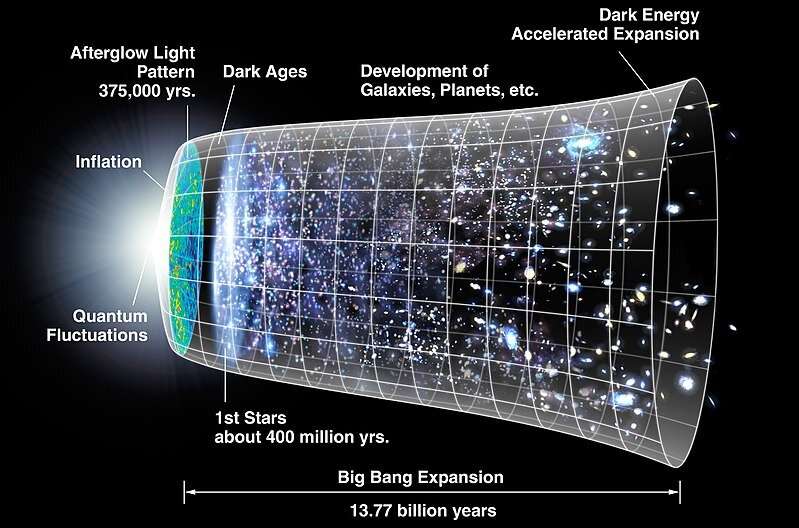September 30, 2019 report
Theorists suggest 'Higgs Troika' may have been responsible for disappearance of antimatter

A team of researchers from Brookhaven National Laboratory and the University of Kansas has developed a theory to explain why there is so much more matter than antimatter in the universe. They have written a paper describing their theory and have posted it on the arXiv preprint server.
For many years, space scientists have unsuccessfully tried to explain why there is so much more matter in the universe than antimatter. In this new effort, the researchers have come up with a theory that they believe could explain the mystery.
The researchers note that thus far, study of the cosmic microwave background suggests that the difference in amounts of matter versus antimatter likely did not happen during the birth of the universe, but slightly after. They note that during that time period, theories suggest the four forces were still united as one. They further note that recent work at the Large Hadron Collider revealed the existence of a very high-energy Higgs boson with a mass of 125 GeV/c2. That finding hinted at the possibility of many kinds of very high-energy Higgs bosons. And that is the basis of the new theory.
The researchers suggest that it is possible that three types of very high-energy Higgs Bosons existed during the time just before a large percentage of antimatter disappeared. And those three kinds of particles, which the researchers refer to as the "Higgs Troika," may have played a role in getting rid of much antimatter. They suggest that a stream of matter was being created by the three particles as they decayed just after the birth of the universe. They further note that a lot of those particles that made up that matter would meet with antimatter particles, resulting in the annihilation of both. If this went on for a length of time, most of the antimatter in the universe would have disappeared. But there would have been enough matter generated by the Higgs Troika remaining to comprise all the baryonic matter observed in the universe today.
For the scenario to work, the researchers note, there would have to have been two as-yet undiscovered Higgs particles, plus the one that has been identified. And they would all have required high enough energies to generate matter when they decayed. Also, the time frame during which the antimatter was being lost would have been short, before the four forces split into their natural states.
More information: Higgs Troika for Baryon Asymmetry, arXiv:1909.02044 [hep-ph]
Journal information: arXiv
© 2019 Science X Network



















